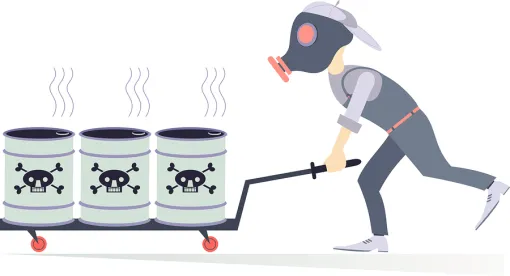Under a new rule effective on Monday, March 23, 2020, owners and operators of stationary sources are required to report qualifying accidental releases to the ambient air of hazardous substances to the federal Chemical Safety and Hazard Investigation Board (CSB). While many companies are currently consumed with handling operations and logistics related to the coronavirus pandemic, compliance will still be expected going forward. Importantly, however, the CSB’s preamble to the new rule expresses a one-year grace period from the effective date of the rule, during which it will refrain from referring reporting violations for enforcement absent a knowing failure to report.
The extent of this reporting obligation will vary depending on whether reporting to the National Response Center (NRC) is also required and has been accomplished. Detailed reporting to the CSB may be required for certain accidental releases. However, if a release report has already been submitted to the NRC pursuant to the federal Comprehensive Response, Compensation, and Liability Act (CERCLA), a facility need only submit the NRC identification number to the CSB.
Who is the CSB? The CSB is an independent federal agency established by the federal Clean Air Act Amendments of 1990 (CAA) and tasked with investigating industrial chemical accidents. The CSB reports its findings on the cause of chemical releases and makes recommendations to facilities and federal agencies, like the Environmental Protection Agency (EPA) and Occupational Safety and Health Administration (OSHA), with an aim to reduce the likelihood and consequences of accidental releases in the future. The CSB published its final rule on Accidental Release Reporting, codified at 40 C.F.R. Part 1604, in February 2020, and the rule took effect on March 23, 2020.
What type of release must be reported to the CSB? Any accidental release that results in a fatality, serious injury (i.e., results in hospitalization), or property damage at or outside the stationary source that is estimated to be equal to or greater than $1,000,000 must be reported. Key definitions follow:
-
An “accidental release” is “an unanticipated emission of a regulated substance or other extremely hazardous substance into the ambient air from a stationary source.”
-
“Regulated substances” and “extremely hazardous substances” include those substances listed under CAA Section 112(r)(3), 42 U.S.C. § 7412(r)(3), and its accompanying regulation, 40 C.F.R. § 68.130, as well as any other substance that may cause death, serious injury, or substantial property damage.
-
“Ambient air” includes “any portion of the atmosphere inside or outside a stationary source.”
-
“Stationary sources” include “any buildings, structures, equipment, installations, or substance-emitting stationary activities which belong to the same industrial group, which are located on one or more contiguous properties, which are under the control of the same person (or persons under common control), and from which an accidental release may occur.”
When is reporting to the CSB required? In general, an owner or operator is required to submit a report to the CSB within eight hours of the accidental release.
However, if a facility has a release of a reportable quantity of a hazardous substance that has already been reported to the NRC as required, the facility need only report the NRC identification number to the CSB within 30 minutes of submitting a report to the NRC.
What information must be included in a report? Except where already reported to the NRC, the following information must be reported to the CSB:
-
the name of, and contact information for, the owner or operator;
-
the name of, and contact information for, the person making the report;
-
the location information and EPA facility identification number;
-
the approximate time of the accidental release;
-
a brief description of the accidental release;
-
an indication whether the accidental release entailed a (1) fire; (2) explosion; (3) death; (4) serious injury; or (5) property damage;
-
the name of the hazardous substance(s) released, as well as the Chemical Abstract Service (CAS) number(s) or other appropriate identifiers;
-
the amount of the release, if known;
-
the number of fatalities, if known;
-
the number of serious injuries, if known;
-
estimated property damage at or outside the stationary source; and
-
whether the accidental release has resulted in an evacuation order impacting members of the general public and others, and, if known, information about the scope of the evacuation order
How must CSB reporting be submitted? Reports are to be made by email to report@csb.gov or by telephone at (202) 261-7600.
Can information reported to the CSB be revised? Yes. An owner or operator is permitted to revise or update a report made to the CSB via email to report@csb.gov or by letter to CSB 1750 Pennsylvania Ave. NW, Suite 910, Washington, DC 20006, within 30 days following the submission of the initial report to the NRC or CSB. An update may also be submitted up to 90 days following the submission of an initial report, but the email or letter must explain why the revised report could not have been provided within the first 30 days.
Is there a grace period for enforcement? Yes. As mentioned above, the preamble to the final rule that there will be a one-year grace period from the effective date of the rule, during which time it will refrain from referring reporting violations for enforcement, unless there is a knowing failure to report.




 />i
/>i

